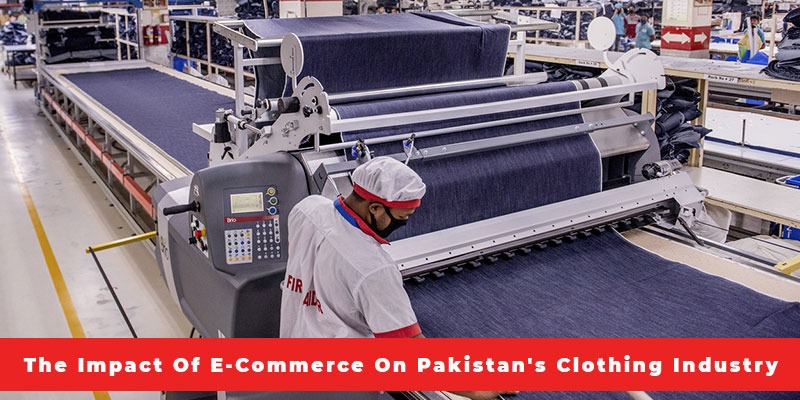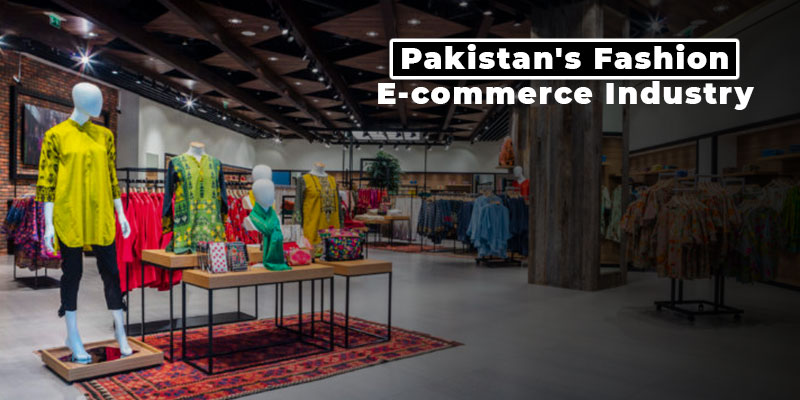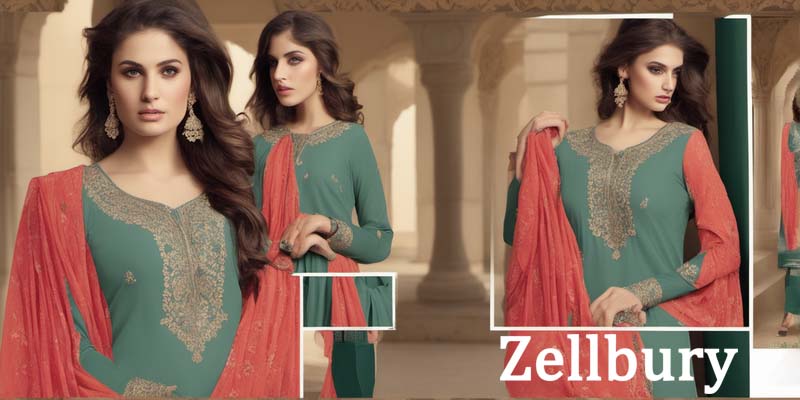The Impact of E-Commerce on Pakistan's Clothing Industry

Pakistan Clothing/Fashion Industry
Pakistan's apparel and fashion sector is a colorful tapestry with a growing embrace of contemporary trends mixed with a wealth of skillful craftsmanship and tradition. The digital thread that has been weaving itself through this industry in recent years, e-commerce, is changing the landscape at an exciting rate. This blog examines the effects of e-commerce on consumer behavior, the traditional industry, and the direction of fashion in Pakistan with a focus on the apparel sector.
But first, we need to understand the situation in the fashion industry before E-commerce.
Pakistan’s clothing industry is known as one of the most flourishing and appreciated industries in the world. There are two reasons. First, Pakistan is a country, naturally blessed with cotton production. Secondly, Pakistan is a country very rich in tradition, creativity, and versatile talent.
Our creative designs are cherished and admired as premiere art in the whole world including Arab, and even Western countries! In other words, the whole world is a huge potential market for the Pakistani Fashion/clothing Industry. However, this industry needs to be tapped into properly and gain benefits to the maximum extent.
E-commerce in Pakistan: An Expanding Sector
In Pakistan, e-commerce is becoming more and more popular. This growth is being driven by factors such as rising internet penetration, a growing number of young people who feel comfortable shopping online, and the convenience that comes with it. By 2025, the e-commerce market in Pakistan is predicted to grow to an astounding $[48 billion] [source: ecommercepulse.com]. Clothes continue to be a key driver of this expansion, with an enormous increase in online fashion sales.
Pakistan's Clothing Industry Trends: Combining Tradition and Digital
Pakistan's fashion industry is renowned for its distinctive fusion of modern and traditional designs. Men's kurtas' classic elegance, the rich fabrics of lehngas, and the exquisite embroidery work on shalwar kameez all have enduring value. But there's a growing market for comfortable everyday wear, fusion clothing—a blend of Eastern and Western styles for office, hanging out, and for friends and family get-togethers.
In Pakistan, Online Shopping Is Beneficial for Customers
Pakistani consumers have benefited from e-commerce in many ways.
Greater Variety:
Online retailers provide a huge assortment of apparel from national chains, independent designers, and local boutiques. Customers now have access to a greater selection than what might be found in their neighborhood stores.
Convenience and Time-Saving: Purchasing online removes the need to visit physical locations. Customers can save a lot of time and effort by perusing collections, evaluating costs, and making purchases from the comfort of their homes.
Competitive Prices:
As e-commerce increases retailer competition, customers benefit from better offers and discounts.
Emerging Designers Brands:
E-commerce platforms offer a platform for up-and-coming designers and brands to exhibit their creations and reach bigger audiences than let's say personal networks.
Effect of E-commerce on the Conventional Clothes Industry
The Pakistani traditional apparel industry has been significantly impacted by the e-commerce growth:
Market Access for Smaller Businesses:
Home-based artisans and smaller companies can reach a national and even worldwide audience through e-commerce platforms. This gives them the ability to take on bigger, more established brands.
Direct-to-Consumer Sales:
In order to cut out intermediaries and boost profit margins, a growing number of boutiques and designers are now using e-commerce to sell directly to customers.
Digital marketing and branding:
The traditional clothing industry has come to realize the significance of digital marketing and branding as a result of e-commerce in Pakistan. Nowadays, companies are using online advertising and social media to better reach their target market.
Challenges and Obstacles
E-commerce in Pakistan's clothing industry has numerous advantages, but it also has drawbacks.
Infrastructure for Logistics and Delivery:
The seamless operation of e-commerce depends on having an efficient and reasonably priced infrastructure for logistics and delivery. Even with the advancements that have been made, more can be done in this field.
Dependency on Cash on Delivery (COD):
A sizeable percentage of Pakistani internet buyers continue to use cash-on-delivery (COD) services. Businesses may experience increased operating expenses and returned orders as a result of this.
Concerns about Product Quality and Customer Trust:
Establishing trust with online customers is essential for e-commerce businesses to succeed over the long run, particularly when it comes to product quality and size accuracy.
Pakistan's Textile Industry's Digital Transformation
E-commerce has an impact that goes beyond just online sales. It is spearheading a digital revolution in Pakistan's textile sector:
Supply Chain Management:
Companies are using e-commerce platforms to increase inventory control, optimize production procedures, and streamline their supply chains.
Data-Driven Decision Making:
Sales information from online platforms offers useful information about consumer preferences and purchasing patterns. Companies may use this information to inform choices about new product creation, advertising campaigns, and inventory control.
Greater Transparency:
E-commerce platforms have the potential to increase transparency by revealing information about the origin of materials and ethical production methods to customers along the entire supply chain.
Future of The Clothing Industry in Pakistan
The fashion industry in Pakistan is gaining international exposure through e-commerce. Pakistani designers are now able to exhibit their work on global platforms, drawing in clients from all over the world. This increases export potential and puts Pakistan's fashion industry on the international map.
In a country where almost every SME can generate great quality in terms of apparel and fashion, these brands deserve to be able to bring their production to a wider, more versatile audience/market. By tapping into international markets, we will fiercely explore the potential to which we can create value.
FAQs:
Q1) How has e-commerce affected Pakistan's clothing industry?
E-commerce in Pakistan has helped expand and increase the sales volume of clothing and fashion brands, manyfold.
Q2) What are the benefits of e-commerce for Pakistan's clothing industry?
The clothing industry in Pakistan is enjoying the following benefits:
- Market Access for Smaller Businesses
- Direct-to-Consumer Sales
- Using Digital Marketing for Branding
Q3) How has online shopping impacted traditional clothing stores in Pakistan?
Online shopping continues to take bigger and bigger chunks out of the traditional stores business. Although we don’t think that Online buying will take maximum market share in Pakistan soon.
Q4) Which e-commerce is best in Pakistan?
The biggest stores as of now are
- OLX
- Daraz
- Amazon
- Priceoye
Services change quickly and another big e-commerce platform will likely appear anytime.
Q5) Is e-commerce profitable in Pakistan?
E-commerce is not only profitable but also a field that holds immense potential in Pakistan.
Q6) What is the e-commerce scope in Pakistan?
E-commerce continues to evolve and grow in Pakistan and other countries.
Q7) What are the 4 types of e-commerce?
- Business-to-Consumer (B2C)
- Business-to-Business (B2B)
- Consumer-to-Business (C2B)
- Consumer-to-Consumer (C2C)
Q8) What are the 6 major types of e-commerce?
- Business-to-consumer (B2C)
- Business-to-business (B2B)
- Business-to-government (B2G)
- Consumer-to-consumer (C2C)
- Consumer-to-business (C2B)
- Consumer-to-government (C2G)



.jpg.jpg)



